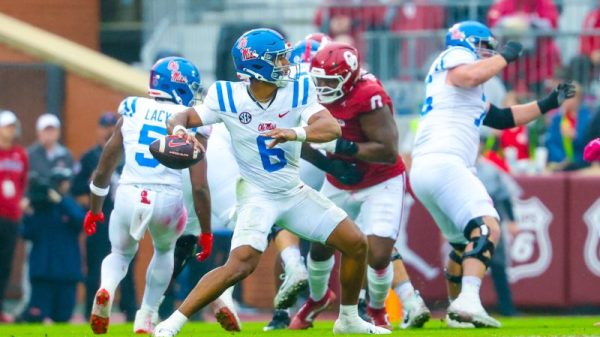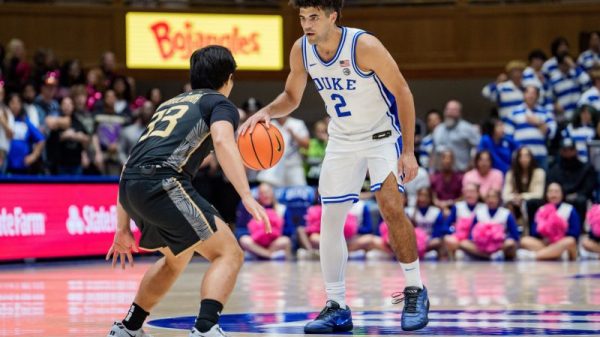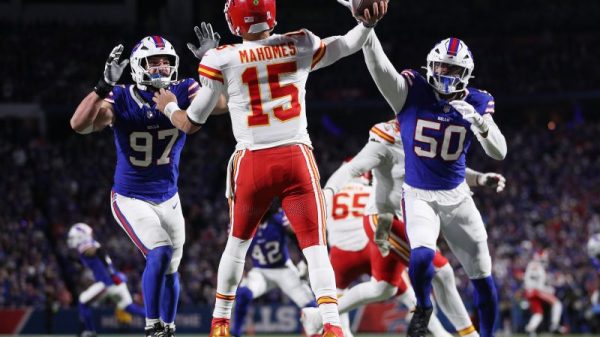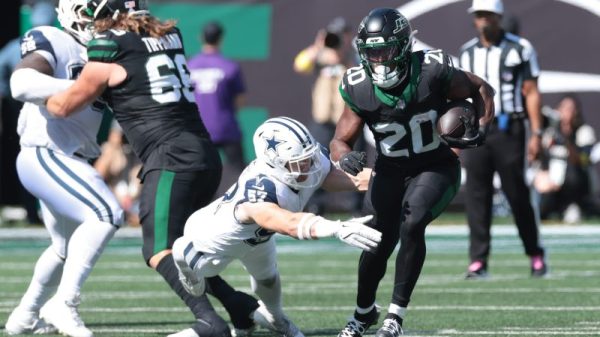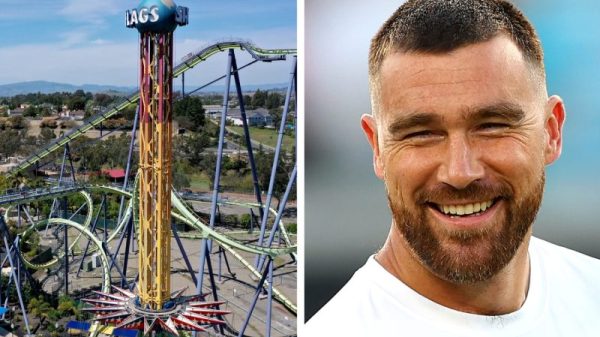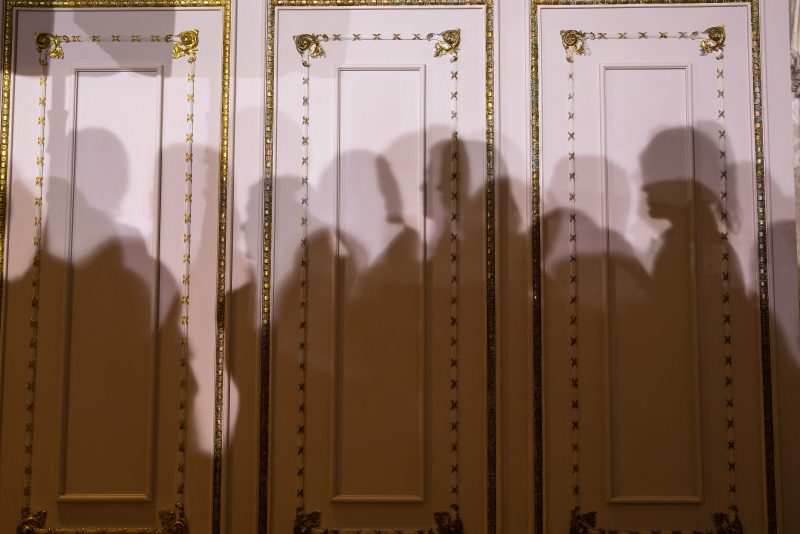When former president Donald Trump was first indicted by a federal grand jury in June, the world got its first peek at the strength of the evidence compiled by special counsel Jack Smith. It was, by all accounts, remarkable, detailing a number of alleged actions by Trump and his aide Walt Nauta that articulated an effort to both retain documents the government had demanded Trump turn over and to keep the government from knowing that’s what was happening.
Even by the time that the indictment dropped, though, this effort was pretty obvious. It was known, for example, that an attorney for Trump had attested in early June 2022 that she was turning over all of the material subpoenaed by the government the previous month, including anything marked as classified (whether it was still classified or not). The search of Mar-a-Lago in August 2022 turned up more than 100 documents that were covered by that subpoena, but not turned over.
The original indictment added new details to this series of events, including alleging that Trump had moved boxes out of view of his attorneys before they began their search for documents. After the material that was turned over in early June was collected, Trump also allegedly suggested that maybe any particularly “bad” documents be disposed of.
Prosecutors were aware of the movement of the boxes because they subpoenaed and received surveillance footage from Mar-a-Lago. And it’s that subpoena and the response from Trump and his co-defendants that are the stars of the superseding indictment released on Thursday night.
The government alleges — and certainly has not yet proved beyond reasonable doubt in a court of law — a specific effort to figure out how to avoid turning over that footage. It offers remarkable detail in doing so, details that strongly suggest an attempt to get rid of surveillance footage but also show the way in which Trump’s will is made manifest.
As told in the indictment, the story begins on June 3, 2022. That’s the day on which a Justice Department official was handed a sealed folder containing material marked as classified, purportedly all such material that was at Mar-a-Lago. While there, the feds noticed surveillance cameras near the lower-level storage room where, in August, the FBI would find dozens of documents with classification markings. The government sought and obtained a search warrant for footage from the cameras.
A draft of the subpoena was sent to Trump’s attorneys on June 22 while Trump was in Bedminster, N.J., for the summer. (Everything in this timeline, we should note, is alleged in the indictment and, again, unproved.) The following day, Trump had a lengthy conversation with Carlos De Oliveira, a Mar-a-Lago employee who had also allegedly helped Nauta move a number of boxes back into the storage room after the attorney’s search for material responsive to the May subpoena.
On Friday, June 24, the formal subpoena was received by Trump’s team. At about 1:30 p.m., Trump’s attorney told Trump about it. At a quarter to 4 p.m., Nauta was informed that Trump wanted to see him. Later that evening, Nauta, who had been planning to join Trump on a trip to Illinois, suddenly changed his travel plans to head to Florida.
In text messages to others, he claimed that the change was a function of a family emergency. But, in the same time period that he was changing his travel plans, he also reached out to De Oliveira and the head of IT at Mar-a-Lago (whom the New York Times identifies as Yuscil Taveras) to see if they were going to be around over the weekend. After De Oliveira and Nauta spoke for a few minutes by phone, De Oliveira texted the IT staffer.
“Walter call me earl[ier] said it was trying to get in touch with you,” he wrote. “I guess he’s coming down tomorrow I guess needs you for something.” The IT staffer then texted Nauta to let him know he was available if needed.
That was at about 7 p.m. So over the 5 ½ hours from Trump’s being informed about the subpoena, Nauta changed his plans to travel to Florida and lined up De Oliveira and the IT staffer to be at his disposal once he arrived there. De Oliveira also allegedly told another Mar-a-Lago staffer that Nauta “wanted the trip to remain secret,” in the indictment’s telling. He also told the same staffer that Nauta wanted him to find out how long footage from the security cameras was stored.
Nauta arrived that evening, according to the indictment, and he and De Oliveira allegedly “walked with a flashlight through the tunnel where the Storage Room was located, and observed and pointed out surveillance cameras.” The original subpoena was for footage through June 24, 2022, so either the government got additional footage showing this unfolding or has testimony to that effect.
The following Monday, June 27, De Oliveira went to the IT office where the IT staffer was working. He took the staffer to a small closet and proceeded to discuss the footage. He asked the staffer how long footage from the cameras was stored and was told about 45 days.
“DE OLIVEIRA told Trump Employee 4 that ‘the boss’ wanted the server deleted. Trump Employee 4 responded that he would not know how to do that, and that he did not believe that he would have the rights to do that,” the indictment alleges. The staffer said he’d have to talk to a superior to make it happen. “DE OLIVEIRA then insisted to TRUMP Employee 4 that ‘the boss’ wanted the server deleted and asked, ‘what are we going to do?’”
Presumably, this conversation was provided to investigators by the IT staffer.
About half an hour after he pulled the staffer aside, De Oliveira texted Nauta. The two then spoke on the phone. A few hours later, Nauta let De Oliveira know that he was coming to see him.
We now come to one of the most intriguing new parts of the indictment.
“Between 1:31 p.m. and 1:50 p.m., DE OLIVEIRA walked through the bushes on the northern edge of The Mar-a-Lago Club property to meet with NAUTA on the adjacent property,” the indictment alleges, “then walked back to the IT office that he had visited that morning; and then walked again through the bushes on the northern edge of The Mar-a-Lago Club property to meet with NAUTA on the adjacent property.”
There are a few possible reasons for this weird (alleged) interaction. One is that Nauta was engaged in some activity off the Mar-a-Lago grounds and simply couldn’t come closer to De Oliveira. Another is that Nauta didn’t want to be recorded as having visited Mar-a-Lago that day, either by Secret Service or other employees. Another is that Nauta and De Oliveira — by now very aware that the federal government was interested in movements at the facility — were eager not to be observed. Remember that De Oliveira’s conversation with the IT staffer took place not in the staffer’s office or a hallway but, instead, in a small nearby room.
That people can gain access to Mar-a-Lago by slipping through the bushes is, of course, a subject that probably deserves more consideration, too.
A bit before 4 p.m. that day, Nauta called Trump and spoke with him for several minutes. That’s where the government’s story about the effort ends.
It seems that the alleged effort to delete the footage was unsuccessful, given that the indictment at other times delineates movements of boxes with precise timestamps. But the evidence presented in the document does offer a convincing argument that the attempt was made. De Oliveira was charged with conspiracy to obstruct justice and “altering, destroying, mutilating or concealing an object.” The indictment alleges that Trump called De Oliveira at one point and offered to hire him an attorney — after Nauta allegedly texted another staffer in an apparent attempt to gauge De Oliveira’s loyalty to Trump.
There’s an intriguing footnote here. In October of last year, the room were the surveillance footage was stored on a server was flooded as the nearby pool was being drained. This was probably after the subpoenaed footage had been turned over to investigators and it doesn’t appear that the server was damaged.
According to the Times’s Katie Benner, though, the staffer responsible for draining the pool and accidentally flooding the room was none other than Carlos De Oliveira.







